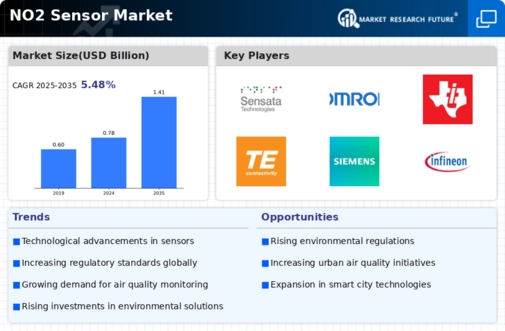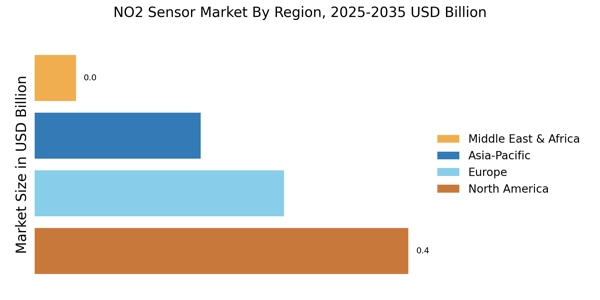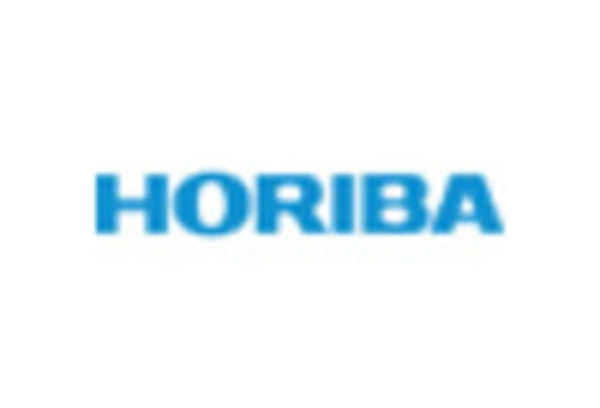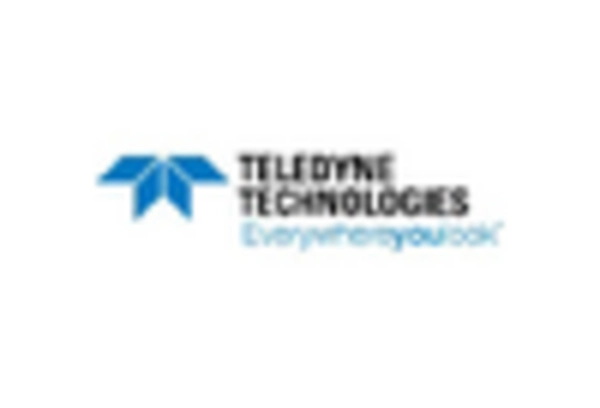Increasing Air Quality Concerns
The rising awareness regarding air quality issues is a pivotal driver for the NO2 Sensor Market. As urbanization accelerates, the levels of nitrogen dioxide (NO2) emissions from vehicles and industrial activities have become a pressing concern. According to environmental studies, elevated NO2 levels are linked to respiratory diseases and other health problems, prompting governments and organizations to seek effective monitoring solutions. This heightened concern has led to increased investments in air quality monitoring technologies, including NO2 sensors. The market is projected to witness substantial growth as more entities prioritize air quality management, thereby driving demand for advanced NO2 sensors that provide real-time data and analytics.
Government Regulations and Standards
Government regulations play a crucial role in shaping the NO2 Sensor Market. Many countries have established stringent air quality standards to combat pollution and protect public health. For instance, regulatory bodies often mandate the installation of NO2 sensors in urban areas to monitor compliance with air quality standards. This regulatory push not only enhances the demand for NO2 sensors but also encourages innovation in sensor technology. The market is likely to expand as manufacturers develop sensors that meet or exceed these regulatory requirements, ensuring accurate and reliable monitoring of NO2 levels. Consequently, the interplay between regulation and market growth is expected to foster a robust environment for NO2 sensor adoption.
Integration with Smart City Initiatives
The integration of NO2 sensors into smart city initiatives is emerging as a key driver for the NO2 Sensor Market. As cities strive to enhance urban living conditions, the incorporation of advanced monitoring systems, including NO2 sensors, is becoming increasingly prevalent. Smart city projects often utilize these sensors to gather data on air quality, enabling city planners to make informed decisions regarding traffic management and pollution control. The growing trend towards smart cities is likely to propel the demand for NO2 sensors, as municipalities seek to leverage technology for better environmental management. This integration not only supports public health initiatives but also fosters a sustainable urban environment, thereby driving the NO2 sensor market forward.
Rising Demand from Industrial Applications
The industrial sector's increasing demand for NO2 sensors is a significant driver for the NO2 Sensor Market. Industries such as manufacturing, oil and gas, and power generation are under pressure to monitor and control emissions to comply with environmental regulations. The need for real-time monitoring of NO2 levels in these sectors is paramount, as it helps in maintaining operational efficiency and ensuring compliance with legal standards. As industries adopt more stringent environmental practices, the demand for reliable NO2 sensors is expected to rise. This trend indicates a robust growth trajectory for the NO2 sensor market, as industries seek advanced solutions to mitigate their environmental impact.
Technological Innovations in Sensing Technologies
Technological advancements in sensing technologies are significantly influencing the NO2 Sensor Market. Innovations such as miniaturization, enhanced sensitivity, and integration with IoT capabilities are transforming the landscape of air quality monitoring. For example, the development of low-cost, high-precision NO2 sensors has made it feasible for various sectors, including automotive and industrial, to implement effective monitoring solutions. The market is anticipated to grow as these technological innovations enable more accurate and efficient detection of NO2 levels, catering to the needs of both consumers and regulatory bodies. As a result, the continuous evolution of sensor technology is likely to drive the expansion of the NO2 sensor market.

















Leave a Comment